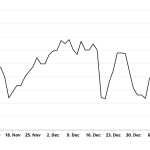
With job cuts in the air, it’s only natural for some workers to wonder just how safe they are from upcoming layoffs. Indeed, U.S. companies cut a staggering 82,307 positions in January 2024, the largest number of layoffs since 2009. Employees in industries ranging from tech to finance, entertainment and more were affected by the organizational changes — and some were caught completely off guard by the news.
But that may not need to be the case. In fact, a la the 1988 Worker Adjustment and Retraining Notification (WARN) Act, large companies are required to file public notices at least 60 days ahead of time for closings and mass layoffs. As such, if your company employs more than 100 workers, it’s surprisingly easy to find out whether layoffs are headed your way.
WARN notices are public layoff filings made in the state in which a given company is based. As such, posted WARN notices can be find on state labor and employment websites.
For example, if your employer is based in the state of New York, you can check for layoff notices at New York’s respective Department of Labor page. Most states have unique pages in this regard, so the best way to check is to simply look up WARN notices for your specific state. This would typically look like “WARN notices [insert state].”
While each WARN page varies somewhat in terms of format or design, you can do many of the same things on these sites. The front of most WARN notice pages typically includes a list of this year’s issued notices as well as available tabs for past years. Many sites let you search directly for companies of interest.
If you see that your company has made a notice in the past few weeks, it may indicate that layoffs are coming.
Who Is Protected Under the WARN Act?
It’s worth noting, there are some lapses in the WARN Act. Indeed, employees that haven’t worked for more than six months, as well as part-time workers, aren’t protected under the legislation.
In addition, a company can cut up to 499 employees without activating the WARN Act if the number represents less than 33% of the employer’s total active workforce at a single employment site.
Prior to a plant closure, a company may also be excused from providing a WARN notice if the company is “actively seeking capital or business,” under the good-faith belief that advanced notice would hurt its ability to obtain capital or business.
Layoffs caused by unforeseeable business circumstances or natural disasters are also exempt from providing the 60-day notice of upcoming layoffs.
Interestingly, in reference to anticipated sequestration (automatic spending cuts), the Obama Administration stated “it is neither necessary nor appropriate for Federal contractors to provide WARN Act notice to employees 60 days in advance of the potential sequestration because of uncertainty about whether sequestration will occur.”
History of WARN Notices for Upcoming Layoffs
WARN notices have been fairly standard procedure for large businesses dating back to the ratification of the act. The WARN Act was first enacted in 1988 under the Reagan Administration. At the time, the Democrat-controlled Congress worked with Republicans to achieve a 66% supermajority as a means to bypass President Ronald Reagan’s refusal to sign the bill. WARN was established to protect employees from overly devastating firing practices.
In addition to the federal WARN Act, several states have passed local-level WARN Acts, some of which expand the requirements for companies planning to initiate mass layoffs or closings. Indeed, 18 states have their own versions of the WARN Act, with some states having lower layoff thresholds or longer notice requirements. California, for example, ignores the federal “one-third” rule for mass layoffs, requiring advance notice for closings, layoffs and relocations of 50 or more employees, regardless of workforce percentage.
The U.S. Government Accountability Office (GAO) reviewed the WARN Act twice, once in 1993 and once in 2003. The GAO recommended simplifying the calculation of some thresholds, as well as clarifying the definition of certain terms and the establishment of a statue of limitations.
On the date of publication, Shrey Dua did not hold (either directly or indirectly) any positions in the securities mentioned in this article. The opinions expressed in this article are those of the writer, subject to the InvestorPlace.com Publishing Guidelines.




